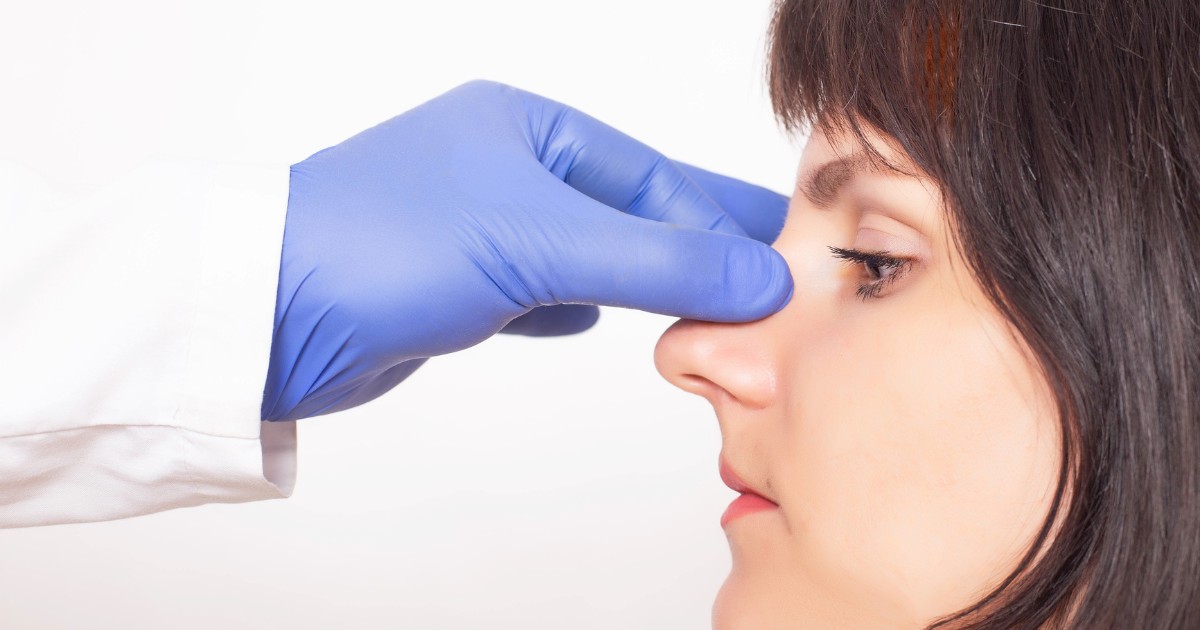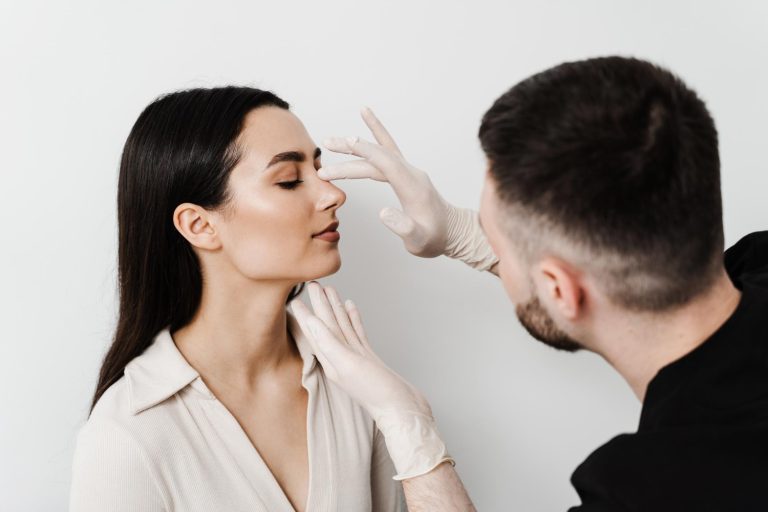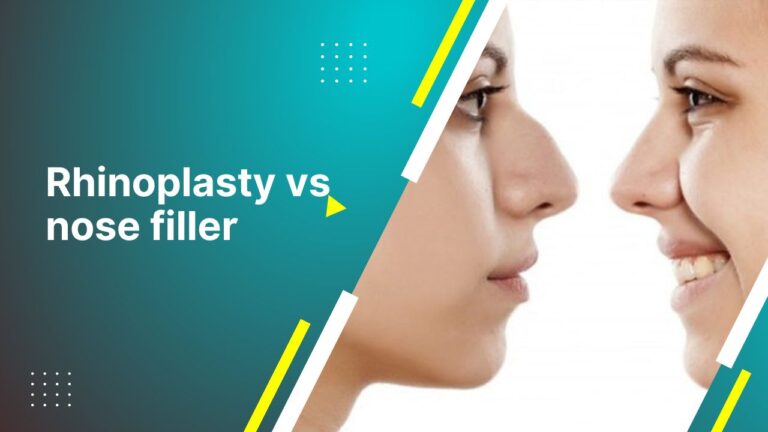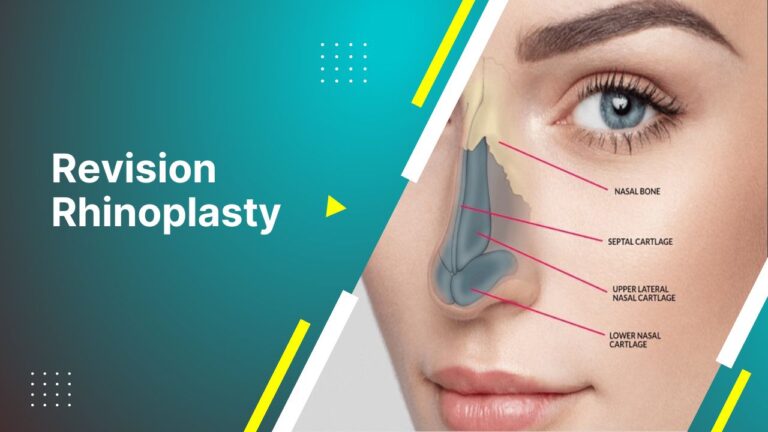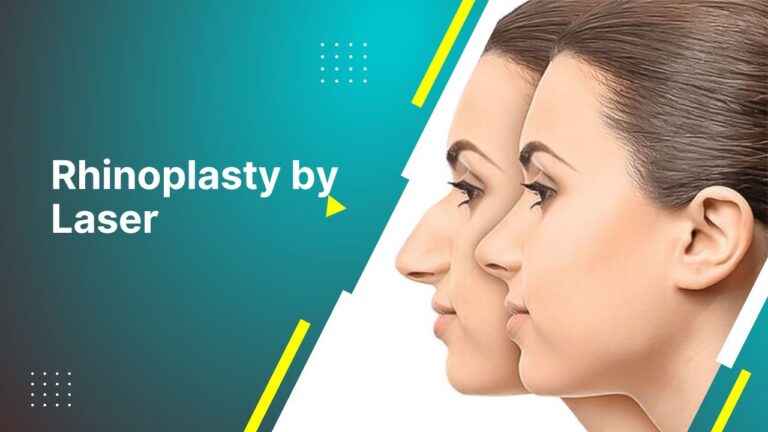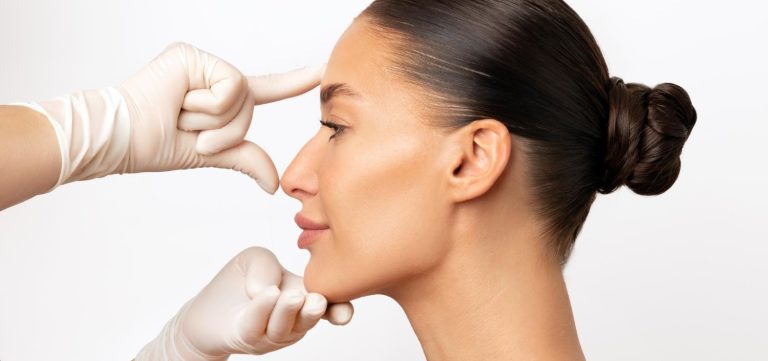The perception that rhinoplasty is painful is prevalent, but advancements in surgical techniques have transformed the experience, prioritising patient comfort.
This overview provides a realistic expectation of the discomfort associated with rhinoplasty and effective pain management strategies.
How much Rhinoplasty is Painful? Debunking Myths
Rhinoplasty surgery , commonly called a nose job, has various misconceptions about the pain involved. It’s crucial to distinguish fact from fiction to set realistic expectations for potential patients.
| Myth | Fact | Explanation |
| Extremely Painful | Mild Discomfort | Postoperative pain is often less than expected. |
| Long-lasting Pain | Short-term Discomfort | The pain usually diminishes significantly after a week. |
| Pain Without Relief | Controlled with Medication | Pain is manageable with prescribed medication. |
| Pain is Constant | Peaks and Tapers. | Discomfort peaks shortly after surgery and subsides. |
| Unbearable without Opioids. | Managed with Mild Analgesics: | Many patients require only over-the-counter pain relief. |
| Same Pain for Everyone | Individual Experiences Vary | Pain perception and tolerance differ from person to person. |
This table addresses common myths about the pain associated with rhinoplasty. It contrasts them with factual information to clarify what patients can realistically expect regarding discomfort and pain management.
Book A Consultation With Dr Tarek Bayazid
Top-rated Plastic Surgeon For Rhinoplasty in Dubai
Installment Plan Available
Rhinoplasty is Painful: Understanding the Reality of Post-Surgical Discomfort
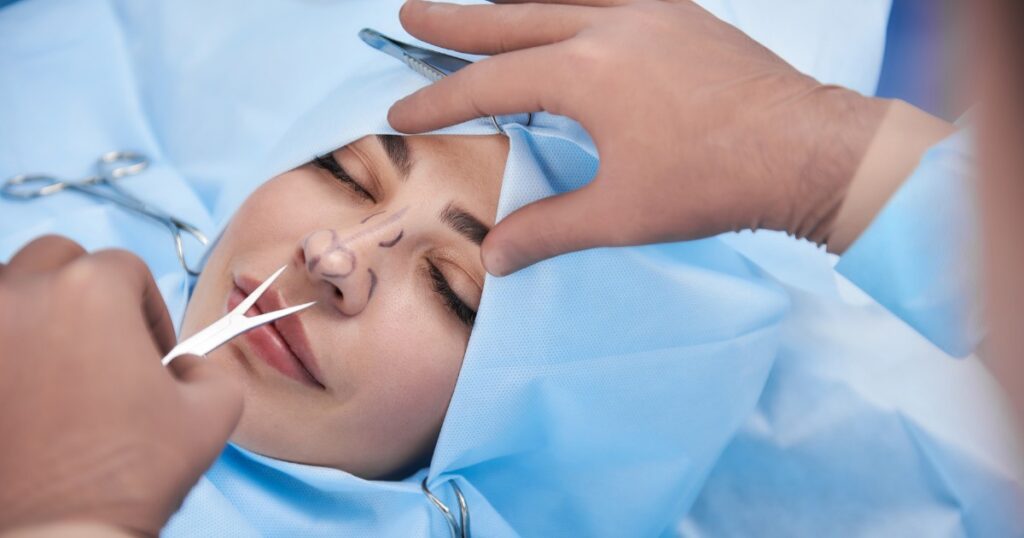
Identifying the intensity and duration of pain after rhinoplasty can help individuals prepare for recovery and ensure a smooth healing process.
- Post-Surgical Pain: Pain is subjective, but most rhinoplasty procedures result in mild to moderate pain.
- : Patients often anticipate more pain than they experience.
- Recovery Duration: Significant pain usually diminishes within 48 to 72 hours.
- Patient Testimonials: Accounts from previous patients can offer a realistic outlook on post-surgical discomfort.
- Surgeon’s Skill : A skilled surgeon can minimise tissue trauma, reducing potential pain.
- Healing Process: Adherence to postoperative instructions can significantly affect discomfort.
- Follow-up Care : Regular follow-ups with the surgeon can help manage any unforeseen pain issues.
| Timeframe | Expected Pain Level | Management Strategy |
| Immediate (0-2 days) | Moderate | Prescription pain relievers and cold compresses |
| Short-term (3-7 days) | Mild to Moderate | Over-the-counter pain medication and rest |
| One Week Post-Op | Mild | Elevation of the head and minimal activity |
| Two Weeks Post-Op | Minimal | Continued rest and adherence to follow-up care |
| One Month Post-Op | Minimal to None | Gradual return to regular activity |
| Long-term | None | Average sensation returns; no ongoing pain |
This table outlines what patients can expect regarding the pain levels at various stages after rhinoplasty and the joint management strategies used to alleviate discomfort during the recovery process.
The Truth About Recovery: Is Rhinoplasty More Painful Than Other Cosmetic Surgeries?
Comparing rhinoplasty to other cosmetic procedures in terms of pain can provide context and help manage expectations for those considering surgery.
- Comparative Discomfort: Rhinoplasty is generally not considered to be more painful than other major cosmetic surgeries.
- Type of Procedure: The invasiveness of the specific cosmetic procedure correlates with potential pain levels.
- Recovery Comparison: Recovery from rhinoplasty is often quicker and less painful than from more invasive body surgeries.
- Patient Experience : Individual experiences vary, but pain from rhinoplasty is commonly described as less intense.
- Surgical Advances: Modern techniques in rhinoplasty aim to reduce pain and improve recovery times.
- Recovery Environment: The comfort of recovering at home, often the case with rhinoplasty, can alleviate discomfort.
- Patient Support: Access to good aftercare and support systems can make the recovery process smoother and less painful.
Pain Relief After Rhinoplasty: Effective Strategies for a Comfortable Recovery
Employing effective pain management strategies post-rhinoplasty is essential for a comfortable recovery and can aid in quicker healing.
- Medication Compliance: Following the prescribed pain relief regimen is crucial for managing discomfort.
- Cold Compress: Using ice packs can reduce swelling and numb the pain in the initial days after surgery.
- Elevation: Keeping the head elevated can alleviate pressure and reduce pain.
- Rest and Relaxation: Adequate rest is vital for healing and can help minimise pain.
- Avoiding Certain Movements : Activities that could stress the nose area should be avoided to prevent additional pain.
- Nutrition and Hydration : Proper nutrition and staying hydrated are key to a smooth recovery.
- Communication with Surgeon : Keeping in touch with the surgeon can ensure pain is managed appropriately.
Rhinoplasty Recovery Timeline: When Does the Pain Subside Post-Surgery?
The recovery timeline for rhinoplasty outlines when patients can typically expect to see a reduction in pain and what milestones to look for during the healing stages of Rhinoplasty.
| Stage | Estimated Timeframe | Pain Level |
| Immediate Recovery | 0-2 days post-op | Highest, managed with medication |
| Early Recovery | 3-7 days post-op | Decreases significantly |
| Mid Recovery | 2 weeks post-op | Mild discomfort if any |
| Late Recovery | 1 month post-op | Minimal to no pain |
| Full Healing | 1-year post-op | No pain, final results visible |
| Check-Ins | Ongoing | Ensure no late complications |
This table presents the expected timeline for pain reduction following rhinoplasty, with each stage indicating the general pain level and associated management, allowing patients to visualise their path to recovery.
The Role of Anaesthesia: Does Rhinoplasty Hurt During the Procedure?
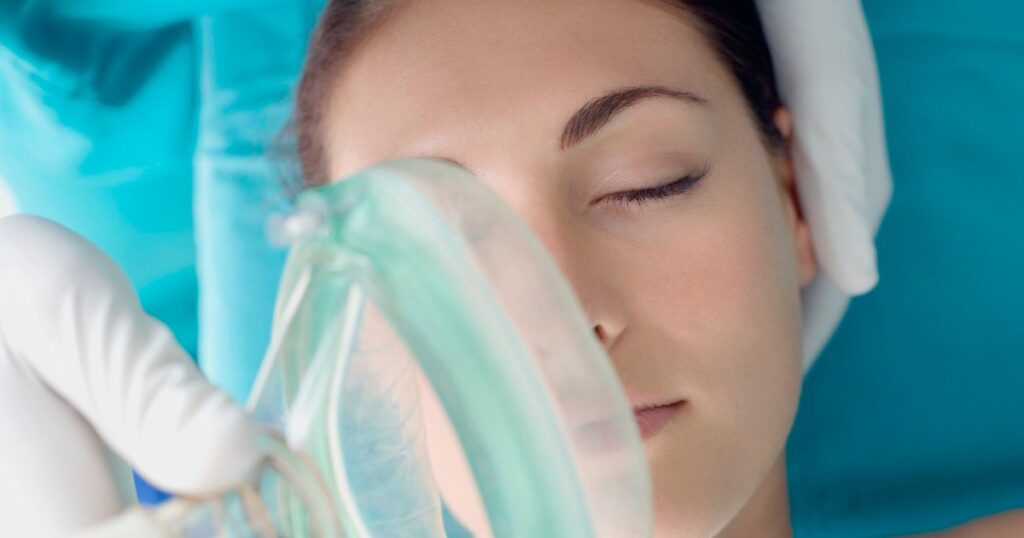
The role of anaesthesia in rhinoplasty is to ensure that patients experience no pain during the surgery, providing a comfortable and pain-free experience.
- Local vs General Anaesthesia Depending on the complexity, rhinoplasty can be performed under local or general anaesthesia.
- Anaesthesia Administration : Anaesthesiologists carefully monitor patients to ensure they remain pain-free during surgery.
- No Pain During Surgery: Patients should not feel any pain during the procedure due to the effects of anaesthesia.
- Anaesthesia Side Effects: Some patients may experience mild discomfort from side effects post-surgery.
- Safety Protocols: Safety measures are in place to address any pain immediately upon awakening from anaesthesia.
- Surgeon Communication : Patients are encouraged to discuss anaesthesia concerns with their surgeon before surgery.
- Recovery from Anaesthesia: As the anaesthesia wears off, patients may begin to feel discomfort, which is managed with pain medication.
Pain Versus Discomfort: What to Expect in the First Week After Rhinoplasty
Distinguishing between pain and discomfort is essential in the first week after rhinoplasty, as most patients will experience the latter as part of the healing process.
- Immediate Post-Op : Swelling and discomfort are common but managed with medication.
- Sleeping Position: Elevating the head even during sleep can reduce discomfort.
- Congestion Feeling : A sensation of nasal congestion is typical and can be uncomfortable but is not painful.
- Daily Improvement: Discomfort should lessen noticeably with each passing day.
- Minimal Activity: Limiting activities can help reduce the risk of bumps or injuries that can cause pain.
- Follow-Up Visits: These are crucial to assess healing and address discomfort issues.
- Patience is Key : The body needs time to heal, and discomfort is a part of the process that diminishes over time.
Long-Term Sensations: Are There Lasting Pains Associated with Rhinoplasty?
It’s essential to explore the possibility of long-term sensations or pains post-rhinoplasty and understand their likelihood and potential causes.
| Factor | Potential Impact | Likelihood |
| Nerve Regeneration | Temporary Sensitivity or Numbness | Common, but usually resolves |
| Scar Tissue | Possible Discomfort | Uncommon, can be addressed |
| Structural Changes | Sensation Alterations | Varies, often temporary |
| Revision Surgeries | Additional Recovery Time | Uncommon, only if necessary |
| Healing Process | Individual Differences | Everyone heals differently |
| Surgical Complications | Rare, Can Cause Lasting Pain | Rare and usually preventable |
The table provides an overview of factors that could potentially impact long-term sensations after rhinoplasty, along with the likelihood of these issues persisting, reassuring patients that lasting pain is not an expected outcome. A nose job explanation is simply a description of a medical procedure that changes the shape or size of your nose. It’s like a makeover for your nose done by a doctor.
Pre-Surgery Consultation: Questions to Ask Your Surgeon About Pain and Rhinoplasty

A pre-surgery consultation is a prime opportunity to ask detailed questions about the surgery, recovery, and specifically about pain management during the rhinoplasty process.
- Pain Management Plan : Understand what medications will be provided and how pain will be managed.
- Anaesthesia Options: Discuss the types of anaesthesia available and what is recommended for your procedure.
- Get clarity on what levels of discomfort or pain to expect during recovery.
- Potential Complications : Inquire about any risks that may increase pain and how they are mitigated.
- Surgeon’s Experience : Ask about the surgeon’s experience managing pain in rhinoplasty patients.
- Aftercare Services : Learn about the aftercare services to manage pain post-surgery.
- Patient Testimonials : Request testimonials from previous patients regarding their pain and recovery experience.
Some discomfort is inevitable; characterising rhinoplasty as painful does not align with most patients’ experiences. You can reshape your nose with Rhinoplasty . With modern pain management, the journey to your new profile can go more smoothly than anticipated, dispelling the myth that rhinoplasty is painfully transformative.
Dr Tarek , a renowned Dubai plastic surgeon, offers natural results with a patient-centred approach. Transform your look with Dr. Tarek Bayazid. Book a consultation today for expert care that prioritises your comfort and results.

